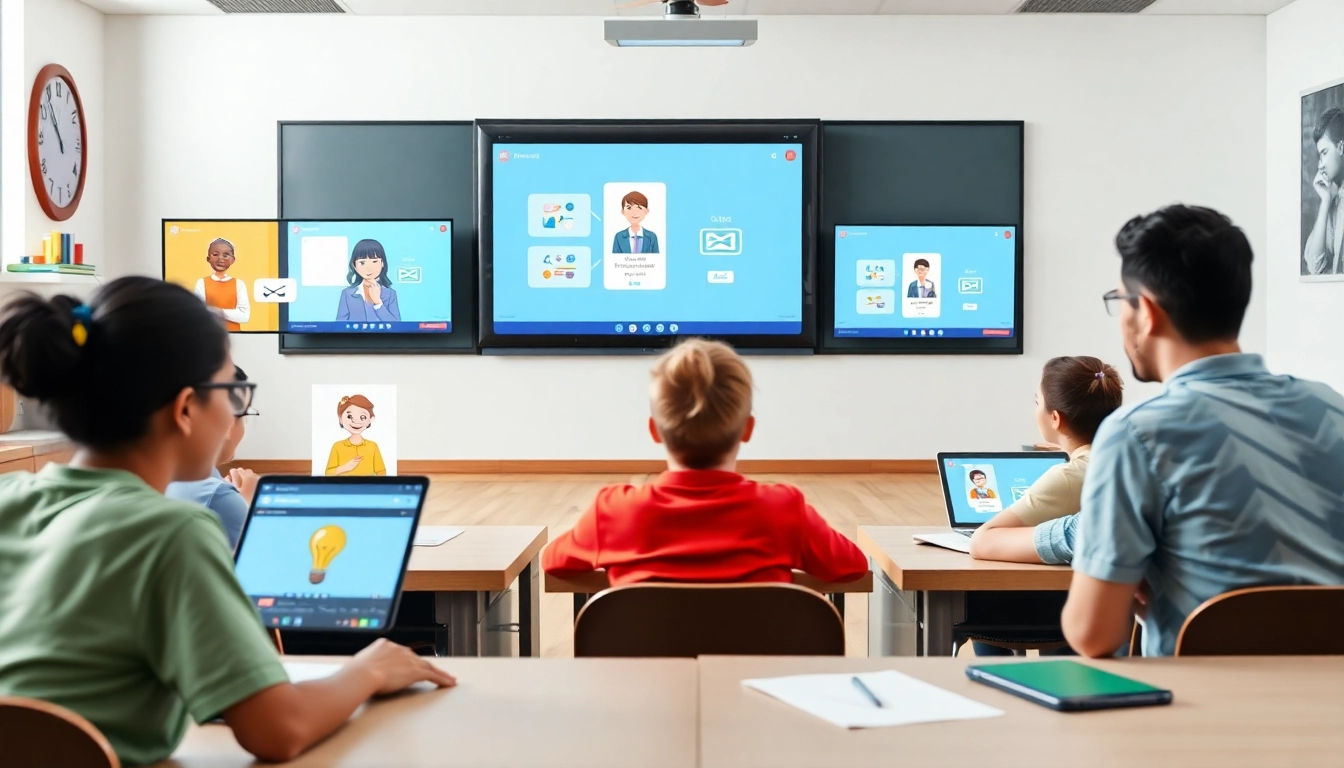Unlocking Creative Potential with My Color School’s Educational Coloring Resources
In an era where visual literacy and creative skills are increasingly valued, integrating engaging and educational coloring activities into children’s learning journey offers unparalleled benefits. My Color School stands out as a premier platform designed to foster artistic expression, cognitive development, and joyful learning through a vast array of printable coloring pages tailored for various ages and themes. This comprehensive guide delves into how educational coloring pages serve as vital tools in early childhood development, how My Color School curates age-appropriate and meaningful content, and effective strategies for maximizing their educational impact both at home and in classrooms. With a focus on inclusivity, creativity, and measurable outcomes, this article aims to empower parents, educators, and caregivers to harness the full potential of coloring activities for holistic child development.
Understanding the Benefits of Coloring Pages for Early Education
Developmental Skills Boosted by Coloring Activities
Coloring activities go far beyond mere entertainment; they are instrumental in nurturing a broad spectrum of developmental skills. Engaging in coloring helps children improve their hand-eye coordination, enhance focus, and develop bilateral coordination—the ability to use both hands simultaneously with coordination. These skills are foundational for writing, cutting, and other fine motor tasks essential to academic success.
Research indicates that early engagement with coloring can improve visual-motor integration, which directly influences reading and math skills. For instance, a study published in the Journal of Developmental & Behavioral Pediatrics highlights that children who participate in regular fine motor activities such as coloring exhibit increased attention span and better academic performance in later years.
Moreover, coloring encourages spatial awareness and understanding of proportions, shapes, and patterns. As children select colors and apply them within boundaries, they internalize concepts of symmetry, contrast, and visual organization, which are crucial for logical reasoning and problem-solving.
How Coloring Enhances Fine Motor Skills in Kids
Fine motor development is essential for children to perform everyday tasks such as writing, buttoning, and using utensils. Coloring pages serve as an effective activity to refine these skills by requiring children to grasp crayons, markers, or colored pencils and maneuver them with control. The repetitive motion of coloring strengthens the small muscles in their hands and fingers.
At My Color School, curated coloring pages are designed with varying complexity levels, encouraging progression from simple shapes to detailed scenes. For example, initial pages with large, uncomplicated spaces help younger children develop their grip and precision, while more intricate designs enhance control and endurance in older kids.
Practical tip: Incorporate different tools like wax crayons, fine-tipped markers, or colored pencils to diversify sensory inputs and further develop dexterity.
Using Coloring Pages to Teach Colors, Shapes, and Concepts
Coloring pages are a natural medium for introducing foundational concepts such as colors, shapes, and categories. For example, My Color School offers themed pages like elephant coloring pages that help teach color association through visual cues, or Pride coloring pages that promote discussions around diversity and acceptance.
educators can create interactive lessons by encouraging children to identify specific colors and shapes while coloring. For instance, asking questions like “Can you find all the circles on this page?” or “What color will you use for the rainbow?” fosters critical thinking and language development.
Using thematic pages aligned with holidays or cultural themes, such as Thanksgiving or Pride, contextualizes learning and makes abstract concepts more tangible and relatable.
Curating Engaging Content at My Color School
Selecting Age-Appropriate Coloring Pages for Different Learning Stages
Effective educational coloring starts with appropriate content selection tailored to children’s developmental stages. For preschoolers, simple pages featuring large shapes, limited colors, and minimal detail help build confidence and foundational skills. As children grow, access to more detailed and complex designs, like those found in My Color School’s collections, promotes sustained engagement and advanced fine motor skills.
For early learners, pages such as “Elephant Coloring Pages” and “Grasshopper Coloring Pages” introduce animals with minimal background detail, promoting focus and enjoyment. Older children can be challenged with pages like “Goth Coloring Pages” or “Clothes Coloring Pages” that incorporate intricate patterns and cultural expressions, fostering creativity and cultural awareness.
Best practice: Use assessment-based selection, observing each child’s motor skills and interest levels to provide the right level of challenge that inspires growth without frustration.
Integrating Educational Themes like Thanksgiving, Pride, and Nature
Themed coloring pages are powerful tools to reinforce cultural literacy and social-emotional learning. For example, My Color School offers September-themed Thanksgiving turkey coloring pages that enhance holiday-related vocabulary and gratitude concepts. Likewise, pride-themed pages promote inclusivity, diversity, and acceptance, essential values in modern education.
Nature-themed pages such as “Grasshopper Coloring Pages” teach ecological awareness and respect for the environment. By integrating such themes into coloring activities, educators and parents can cultivate empathy, environmental stewardship, and cultural understanding alongside artistic skills.
Tip: Combine coloring activities with story-telling and discussion prompts related to the theme to deepen engagement and reinforce learning outcomes.
Creating Interactive and Printable Resources for Homeschooling
Homeschooling families benefit greatly from accessible, high-quality printable resources. My Color School provides downloadable coloring pages that are easy to incorporate into daily lessons, thematic units, or special projects. Utilize printable sheets as part of learning stations, art centers, or thematic crafts.
For example, a lesson on animals could feature the “Minnie Coloring Pages,” combined with storytelling, vocabulary building, and writing exercises based on the characters. Additionally, printable coloring pages like the “Pennywise Coloring Pages” or “Hands Coloring Pages” can serve as prompts for discussions on identity and diversity.
Pro tip: Incorporate digital tools like PDFs with interactive features or customizable coloring pages to tailor activities further and track progress over time.
Optimizing Your Kids’ Learning Experience with Digital and Printable Resources
Best Practices for Using Printable Coloring Pages at Home and School
Maximizing the educational benefits of printable coloring pages involves strategic implementation. Create a designated art area to foster independence and creativity. Encourage children to take ownership by choosing pages aligning with their interests or current themes.
Set clear objectives, such as practicing specific colors, shapes, or storytelling. Use prompts that stimulate thinking, like “Tell a story about what this animal is doing.” This blends art with literacy and imaginative play.
Ensure that materials are accessible, organized, and conducive to a mess-free environment by providing appropriate storage and tools.
Consistency is key: integrate coloring into daily routines or thematic lesson plans, measuring progress through observations and portfolio collections of completed works.
Digital Tools and Platforms Supporting Creative Learning
Beyond printable resources, digital platforms offer interactive coloring experiences. Programs like digital drawing tablets, coloring apps, and websites such as My Color School’s online repository provide diverse formats for engagement. These tools can introduce features like undo/redo, zoom, and animated tutorials, adding layers of interactivity.
Additionally, virtual classrooms can host collaborative coloring projects, fostering peer learning and social skills. Educators can assign digital coloring tasks aligned with lessons, monitor progress remotely, and provide instant feedback.
Emerging technologies like augmented reality (AR) reveal new possibilities—imagine children coloring in a scene that comes to life through AR—merging art and technology for immersive learning experiences.
Measuring Engagement and Educational Outcomes
To ensure coloring activities translate into meaningful learning, set measurable goals and assess outcomes regularly. Use checklists, observation rubrics, and student reflections to evaluate progress in motor skills, color recognition, creativity, and engagement.
Incorporate portfolio assessments where children showcase their best work over time, fostering pride and self-awareness. Feedback should be specific and encouraging, emphasizing effort and improvement.
Align these assessments with broader curriculum standards to demonstrate how creative activities contribute to overall educational objectives.
Incorporating Art and Coloring in Broader Educational Frameworks
Aligning Coloring Activities with Curriculum Standards
Effective integration of coloring pages within formal education requires alignment with curriculum standards across subjects like art, literacy, and social studies. For example, coloring a scene depicting family Thanksgiving traditions can complement lessons on cultural practices and history.
Standards related to fine arts emphasize creativity, craftsmanship, and understanding of artistic concepts. Incorporate coloring projects that introduce basic color theory, composition, and visual storytelling to meet these goals.
Moreover, linking coloring tasks with language arts through descriptive prompts enhances vocabulary and narrative skills, ensuring holistic educational synergy.
Encouraging Artistic Expression and Storytelling
Coloring is a gateway to self-expression. Encourage children to personalize their artwork by choosing unconventional color schemes or adding details. This fosters confidence and individual voice in their art-making process.
Complement coloring activities with storytelling exercises—have children narrate stories about their scenes or characters. For example, after coloring a Pride-themed page, children can discuss themes of acceptance and identity, blending art with emotional intelligence.
Inspire creative thinking by challenging children to invent stories or poems inspired by their coloring pages, thereby integrating visual arts with literacy development.
Assessing Progress Through Creative Projects
Moving beyond individual pages, educators can develop larger projects that involve multiple coloring activities culminating in art portfolios, murals, or presentations. These projects demonstrate skill mastery, collaboration, and conceptual understanding.
For instance, a unit on animals might include coloring pages, research, and a final class mural. Assessment focuses on creativity, effort, understanding of themes, and technical skill.
Providing opportunities for reflection—such as group discussions or journals—helps children articulate their learning journey and set future artistic goals.
Building a Community of Learners and Parents around My Color School
Sharing Student Creations and Learning Experiences
Creating an environment where children’s artwork is celebrated encourages motivation and pride. Use digital galleries, classroom displays, or social media platforms to share completed coloring projects with families and communities.
Highlighting student stories behind their art fosters a sense of ownership and connection. For example, a featured “Art of the Week” segment can showcase diverse interpretations of a theme like gratitude or diversity.
Involving families through virtual showcases or art contests can extend learning beyond the classroom and strengthen home-school connections.
Parent and Educator Resources for Supporting Creative Learning
To sustain a vibrant art culture, provide resources such as instructional guides, idea lists, and online workshops for parents and teachers. My Color School offers curated tips on nurturing creativity, managing art supplies, and integrating coloring into daily routines.
Encourage collaborative art projects that involve family members or peer groups, promoting social skills and shared learning experiences.
Regular communication about developmental milestones and customized activity suggestions can help caregivers support individual growth effectively.
Creating a Supportive Environment for Artistic Growth
Finally, fostering a positive and inclusive art environment involves encouraging experimentation, emphasizing effort over perfection, and celebrating diverse artistic expressions. Cultivate a mindset that views mistakes as learning opportunities and new ideas as valuable contributions.
Recognize and adapt to individual interests and cultural backgrounds, ensuring all children feel represented and valued in their artistic pursuits. Establishing a routine that integrates fun, exploration, and reflection guarantees long-term engagement and skill development.



